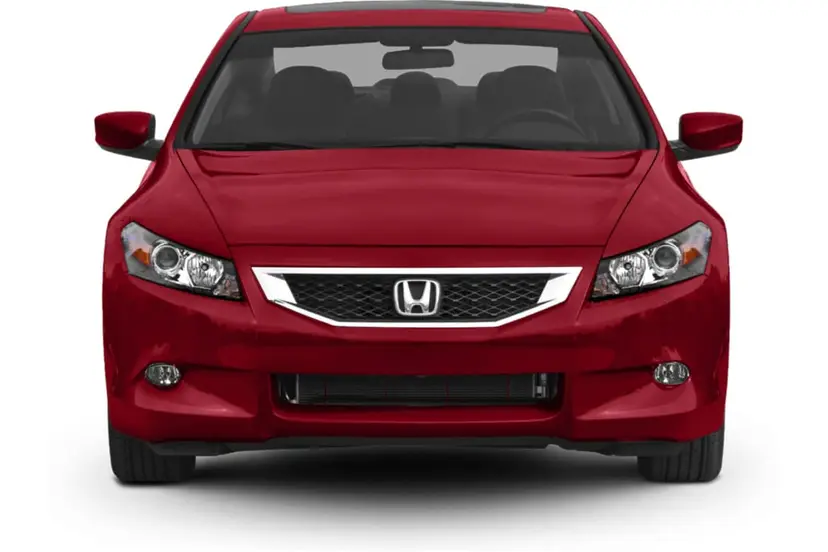
The all-new 2010 Honda Insight hybrid might not have quite the fuel economy or as much interior space as the redesigned Toyota Prius, but the price is right and the gas mileage is significantly better than that of most other cars out there.
While it still costs more than $22,000 to get into a Prius, the new Insight hatchback has a base price of just $19,800 (plus $710 freight), making it the lowest-priced hybrid on the market.
That price brings the entry-level LX model; the uplevel EX model, which we tested, has a few more frills and lists for $21,300. With the optional satellite navigation system, included on our tester, the EX rings up at $23,100 (plus freight).
For the first time, though, the Insight is a practical car, unlike the original model, introduced in early 2000, which came with seating for only two. This newest model has a back seat and room for five.
EPA fuel-economy ratings are 40 mpg city/43 highway, using a combination of a four-cylinder gasoline engine with intelligent variable valve timing and an electric motor.
But this is not a full hybrid system such as that used in the Prius. Instead, the Insight has Honda’s Integrated Motor Assist system, which uses a small electric motor (13 horsepower) to supplement the 98-horsepower gasoline engine, which runs nearly all the time except when the vehicle comes to a stop, such as at a traffic signal.
That gives the Insight better fuel economy than that of a similarly powered gasoline-only vehicle, but nothing near the 51 city/48 highway of the redesigned 2010 Prius.
The Insight’s electric motor is positioned between the engine and the transmission, adding power during acceleration and in highway cruising. Like the Prius, though, it can operate for short distances at low speeds exclusively on electric power, although there is no way to force that. The 2010 Prius has an electric-only mode controlled by a dashboard switch.
But the Insight can squeeze a lot out of a gallon of gasoline anyway. With its 10.6-gallon fuel tank, it has a range of at least 400 miles between fill-ups. It’s also rated by the California Air Resources Board as an “Advanced Technology Partial Zero Emissions Vehicle.”
No options are offered, except for the navigation system. The EX comes with everything available on the Insight, with the most expensive model running just $23,100; in comparison, the 2010 Prius ranges from $22,400-$27,670 plus $750 freight and the buyer’s choice from a list of options.
As for the Insight, even the base LX is well equipped at its under-$20,000 price. Standard are front seat-mounted side air bags, roof-mounted side-curtain air bags for both rows, antilock brakes, continuously variable automatic transmission, automatic climate control, tilt-and-telescopic steering column, manual driver’s seat height adjustment, power windows and door locks, a four-speaker AM/FM audio system with CD player and auxiliary input for iPods and other music players, and more.
Moving up to the EX brings electronic stability control, alloy wheels, cruise control, steering-wheel-mounted paddle shifters, an upgraded audio system with six speakers and a USB audio interface, a center console with armrest and storage compartment, heated side mirrors with integrated turn signals and more.
Offered only on the EX, the navigation system comes with a 6.5-inch screen, and has voice recognition. Along with the navigation system comes a Bluetooth hands-free phone link. The navigation and Bluetooth systems have steering-wheel-mounted controls for their voice-activation functions.
Honda developed the new Insight in response to a promise a couple of years ago to introduce a lower-priced, mass-market hybrid designed to undercut the Prius.
The Insight also is priced below the compact, five-passenger Honda Civic Hybrid, which begins at $23,650.
This newest Insight looks a lot like the Prius, with the same overall body shape and similar rear hatch. It replaced the original Insight, the first hybrid to reach the U.S. market. The original was the only Honda hybrid with a distinctive body style that instantly identified it as a hybrid.
Honda also offered a hybrid version of the midsize Accord sedan for a while, but discontinued it in at 2007 because of poor sales. Contributing to its demise were its over-$30,000 price tag and emphasis on performance rather than fuel economy. With its V-6 engine, it had EPA ratings of just 24 city/32 highway.
The new Insight has a total of 111 horsepower, and comes with a continuously variable automatic transmission; the first Insight was offered with a manual transmission and a three-cylinder engine, with a total of just 81 horsepower. It could get up to 70 mpg, but it was limited to 365 pounds of passengers and cargo combined.
All of the limitations made the original Insight a niche vehicle that was more of a curiosity than a practical vehicle, and its starting price was about the same as the new model.
With the 2010 Insight, there is lots of cargo space behind the rear seat, and the interior is just as roomy as that of the Civic sedan. With the battery pack under the floor, there is more cargo space behind the rear seat, which is capable of being folded down in a 60/40 split.
The engine has a cylinder-deactivation system that shuts off two cylinders during deceleration to help save fuel. The Intelligent Power Unit, which controls the integration of gasoline and electric power, is designed to recharge the onboard nickel-metal-hydride battery pack, located under the rear floor, during braking and deceleration.
The Insight’s Ecological Drive Assist System has a video screen that allows the driver to monitor the hybrid system and tailor driving techniques to maximize fuel economy.
Up front, the bucket seats are comfortable, and the ride is better than that of some compacts. Acceleration is sluggish in comparison with gasoline-only compacts such as the Civic, but the Insight has plenty enough zip for routine uphill freeway merges, and it can cruise easily at highway speed limits – and beyond.
All in all, this is a good alternative to a subcompact or compact sedan that a consumer might purchase purely for the fuel economy. It’s roomier than the subcompacts, has interesting (if not compelling) styling, and can help the family budget considerably if gasoline spikes to $4 a gallon (or above) again.
And it’s a Honda, which means it’s well built and likely to last a long time, although there are questions with most hybrids about how long the expensive nickel-metal-hydride battery packs can last before needing to be replaced. Usually, that’s well past the 100,000-mile point (and after the factory warranty expires, unfortunately).
The automotive columns of G. Chambers Williams III have appeared regularly in the Star-Telegram since 1994. Contact him at 210-250-3236; chambers@star-telegram.com.
The package: Compact, five-door, five-passenger, gasoline/electric powered, front-wheel-drive hatchback.
Highlights: Honda has introduced the second generation of its groundbreaking hybrid, this time as a four-door model with room for up to five people, rather than the two-passenger configuration of the previous model. It’s the lowest-priced hybrid on the market, and has styling similar to that of the Toyota Prius.
Negatives: Fuel economy is much lower than that of the similar Prius.
Engines: 1.3-liter, inline four-cylinder gasoline engine combined with an electric motor.
Transmission: Continuously variable automatic.
Power: 98 horsepower gasoline engine; 13 horsepower electric motor.
Length: 172.3 inches.
Curb weight: 2,723-2,734 pounds.
Brakes, front/rear: Power disc/drum, anti-lock.
Cargo volume: 15.9 cubic feet.
Side air bags: Front seat-mounted, roof-mounted side-curtain for both rows, standard.
Electronic stability control: Standard, with traction control.
Fuel capacity/type: 10.6 gallons/unleaded regular.
EPA fuel economy: 40 city/43 highway.
Major competitors: Toyota Prius, Ford Fusion Hybrid, Mercury Milan Hybrid, Volkswagen Jetta TDI diesel.
Base price range: $19,800-$23,100 plus $710 freight.
Price as tested: $23,810, including freight (EX with navigation).
On the Road rating: 8.2 (of a possible 10).
Prices shown are manufacturer’s suggested retail; actual selling price may vary.
















































